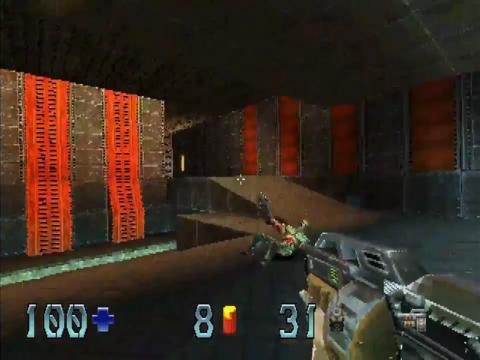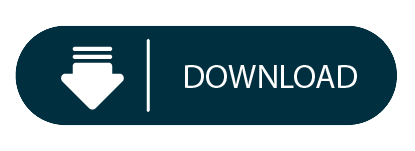New Atlantic Vs. Quake - I Know '99 (Single) 2 versions: 3 Beat Music Ltd. 3BTT41: UK: 1999: Sell This Version: 2 versions. Which game series do you prefer? Personally it has to be Quake for me. I still think that Quake 3: Arena is one of the best games there is, its just more addictive than Unreal 2k4. The core Quake engine helped to popularise some major advances in the 3D gaming space, such as true 3D levels instead of the 2.5D maps that had been used up until that point, and polygonal models.
From Quake Wiki
The Quake .map Format is a plain text file which contains definitions of brushes and entities to be used by QBSP and it's related compiling tools to create a .bsp file used by Quake as levels. They are generally created by level editing software.
- 1A simple map
This is an example of a simple map. There is a Worldspawn entity, a special entity which contains all of a map's solid geometry as well as some map properties, which has a single brush defined, and an info_player_start entity.
Structure[edit]

The general structure of a .map file is to contain entity objects between { } brackets, and to nest brushes within these objects.
Entity definition[edit]
An entity is simply defined by it's classname, it's origin, and it's various keys. An entity may also contain a brush, if it's of a type which uses a brush. An example of this is the worldspawn entity seen in our simple map, which contains a brush.
Brush definition[edit]
A brush consists of several faces, each of which is defined by a plane and additional texture information. The actual geometry of the brush is only defined by the planes, of which there must be at least four. Each plane defines a half space, that is, an infinite set of points that is bounded by a plane. The intersection of these half spaces forms a convexpolyhedron. Note that the actual vertices of the brush are NOT stored in the map file. The vertices are determined by BSP (or a level editing program) by computing the intersections of the planes.
In the example shown here, this brush is a 6 sided cuboid. The plane of its first face is defined by 3 points, ( 256 64 16 ) ( 256 64 0 ) ( 256 0 16 ). The other information supplied is the texture used by the face. 'mmetal1_2' is the name of the texture, a single plane may only have a single texture. '0 0 0 1 1' are how the texture is display, and are respectively 'X offset' 'Y offset' 'Rotation' 'X scale' and 'Y scale'.
Quake 1 Vs Quake 2 Iso
The plane points ( p1 ) ( p2 ) ( p3 ) are interpreted as follows. The plane points must be arranged such that the cross product of the vectors (p3 - p1) and (p2 - p1) is not null, that is, the three points must be linearly independent. Then, the normalized cross product represents the normal vector of the plane. Every point p for which (p - p1) * normal <= 0 (where * is the dot product) holds is considered to be in the half space defined by the plane. Every other point is considered not to be in the half space.
The intersection of half spaces interpretation of brushes does not yield the vertices, however. While there are efficient methods to compute them directly, the QBSP compiler uses a different approach. Starting with the edges and vertices of a huge cube (usually ranging from -4096 to 4096 in each dimension), the edges of the cube are intersected with the planes of the faces. Upon each intersection, new edges and vertices are generated that replace some of the old ones until all planes have been used. Note that due to floating point inaccuracies, there may be slight errors in the position of each vertex. This may lead to QBSP warnings when it heals degenerate vertices and edges.
In the example used here, all plane points have integer coordinates. In the original Quake map format, only integer coordinates are allowed. This has some advantages and drawbacks. The major advantage is that integer numbers can be written to text files without loss of precision, which is not always true for floating point numbers. The major drawback is that not every plane can be accurately represented using integer coordinates for its points. This becomes problematic when brushes are rotated arbitrarily or when the vertices are edited directly. That is why most modern Quake compilers allow floating point coordinates for plane points.
Valve variation of the format[edit]
On top of the original format and its non-integer variation, Quake tools (notably TrenchBroom and ericw-tools) support Valve 220 format. Major difference between both stems from how texture coordinates are represented. Quake standard format for plane definition:
is thus replaced with:
Simple cubes would look like this in standard and Valve formats respectively:
From Quake Wiki

Mapping tools are devoted to the various tasks of Quake level development.
- 1Level Editors
- 2Map Converters
- 3Map Compiling Tools
Level Editors[edit]
These are CAD-like programs used to construct and populate a level. They include tools to create and modify brushes, apply textures, place and modify entities, and set up simple scripting. Some of these programs have their own proprietary file format for saving levels, but they can all save or export your level to a map file, which is needed by compilers in order to generate a game-ready bsp file.
General Purpose Editors[edit]
| Name | Supported OS | Author | Initial release | Latest release |
|---|---|---|---|---|
| BSP (level editor) | Windows | Yahn Bernier, Ben ??? | 1996 | 2007 (0.96d) |
| CraFTEr | In engine (FTEQW) | toneddu2000 | 2017 | 2017 (alpha) |
| GTKRadiant | ||||
| NetRadiant-custom | Windows, Linux, Mac OSX | Divverent, Spog and Niger | 2015 | 2018 |
| QERadiant | ||||
| QE5 | ||||
| QuakeEd | NeXTSTEP | id Software | 1996 | 1996 (???) |
| QuArK | Windows | Armin Rigo, QuArK team | 1996 | 2013 (6.6.0 beta 6) |
| Quest | DOS, Linux, Windows | Chris Carollo, Trey Harrison and Alexander Malmberg | 1996 | 2002 (2.4) |
| Qoole | Windows | Pablo Zurita | ??? | ??? (99 0.98) |
| Quiver | Mac OS9 | Scott Kevill | 1997 | 1999 (1.2) |
| QuMa | Windows | Ben Williams / Negative Eddy Software | 1996 | 1998 (1.6) |
| ToeTag | Mac OSX | Warren Marshall | 2008 | 2008 (2.30) |
| Thred | Windows | Jim Lowell | 1996 | 1996 (0.9b) |
| Tread3D | Windows | Joe Riedel | 1999 | 2009 (3.0 Alpha 3) |
| TrenchBroom | Linux, Mac OSX, Windows | Kristian Duske | 2012 | 2018 (2.1.0 RC3) |
| Worldcraft | Windows | Ben Morris / Valve Software | 1996 | 1998 (1.6a) |
| Hectate added a To-Do; The list of editors would look and function better as a table that detailed things like OS, engine compatibility, etc.. |
| Than added a To-Do; I moved the list to a table, but left the old links here (edit page to see as it's commented out), since I think we should create a small page for all the editors. It's possible to get information about all of them using internet archive etc.. |
Terrain Generators[edit]
These programs are specialized to generate terrain-like geometry out of brushes, but have no general-purpose editing capabilities. They generate map files that can then be imported into the general purpose level editors.
Map Converters[edit]

A number of games based on id Software's technology use map files as their level source format, but these files differ in format from game to game. Map converters are used to convert map files from one format to another, so that mappers can use a level editor that does not natively support Quake. Commonly supported game formats include Quake 2, Quake III Arena, and Half-Life.
- SleepwalkR's mapconv
- Ericwa's ericw-tools
ericw-tools converts: quake, quake2, valve, bp (brush primitives). Conversions to 'quake' or 'quake2' format may not be able to match the texture alignment in the source map, other conversions are lossless.
NetRadiant-custom allows copying and pasting (automatic conversion) between all map formats; handling Quake 1, 2, 3 and related games.
Model-to-Map Converters[edit]
These are programs that can be used to convert geometry of another file type, especially files exported by modelling software, into map files.
| Unspecified user added a To-Do; unspecified work. |
Map Compiling Tools[edit]
Tools to use for map compiling, a process that turns a map file into a bsp file.
QBSP, Light and Vis[edit]
- Bengt Jardrup's enhanced versions of TxQBSP/TreeQBSP, RVis, Light
- Jury-Rigged BJP Tools, modified version of Bengt Jardrup's tools with BSP2 support, details brushes and several other improvements.
- LordHavoc's Hmap2
- Tyrann's TyrUtils - Windows and Mac OS X binaries, plus Linux/Unix supported via source.
- Ericwa's ericw-tools - Map compile tools for Quake and Hexen 2. Based off of Tyrann's quake 1 tools tyrutils, focused on adding lighting features. Source available as well as binaries for Linux, Mac and windows.
Skip Removal[edit]
Skip removal tools are standalone programs that can process a bsp file and remove all surfaces textured with a skip texture, so that those surfaces are not rendered in-game. This can be done by some QBSP tools or via a separate tool.
- Tyrann's TyrUtils qbsp includes skip surface removal (since version 0.6)
- Ericwa's ericw-tools qbsp includes skip surface removal.
- metlslime's newskip
Map Decompilers[edit]
These are programs that can reverse-compile a bsp file back into a map file, with varying results.
- bsp2map - This program generates a map file by creating brushes for every surface in the level. Large walls are split up into multiple brushes according to bsp polys.
- winbspc - This program generates a map file by more closely trying to match texture/brush volumes. It has several options for decompiling a bsp file and usually produces far more usuable results than bsp2map.
Other Tools[edit]
Download Quake For Free
Miscellaneous tools.
- bsp2prt can generate a prt file from a bsp file without needing to rebuild it from scratch using QBSP.
- bspinfo can print basic information about a Quake BSP file.
- bsputil is a small utility for basic manipulation of Quake BSP files. It can extract textures to create a wad from a bsp, extract entities to a text file with the .ent file extension, and run a basic set of tests to check that all internal data structures are self-consistent.
- Scrama's MapConverter [ File:MapConverter.zip ] can perform scaling and convert map formats from Half-Life to Quake, Quake 2 and Quake 3
- Quake CLI Tools [1] Quake CLI Tools are a collection of custom GNU style command line tools for working with Quake files.
See Also[edit]
